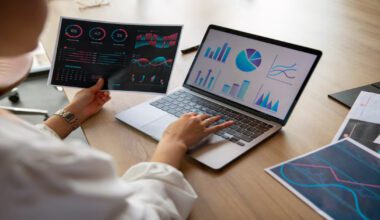Summary: Generative AI uses deep learning to create new data like text, images, and code. It powers innovation across industries and complements human creativity. Despite challenges like bias and data privacy, its growth is explosive. Learning data science is key to mastering this transformative technology and responsibly leveraging its potential.
Introduction
Generative AI isn’t just a tech buzzword—it’s the superstar of the Artificial Intelligence world right now. It’s not just about machines solving math problems or sorting your emails. Generative AI can create things—new text, images, music, videos, and even computer code.
Think of it like a digital artist or writer that never sleeps. From helping writers to discovering new medicines, Generative AI leaves its creative footprints everywhere.
So, what makes Generative AI tick? How does it work? And why should you even care? Let’s dive in.
Key Takeaways
- It uses deep learning techniques to create original content like text, images, music, and code.
- It differs from traditional AI by generating new data instead of analyzing existing data.
- Industries like healthcare, finance, and design actively use Generative AI for innovation and productivity.
- Challenges include bias, misinformation, copyright issues, and high computational demands.
- Learning data science through platforms like Pickl.AI empowers individuals to build and apply Generative AI models ethically and effectively.
What Is Generative AI and How Does It Work?
Imagine teaching a robot to read all the books ever written. Now, ask it to write a brand-new story in the same style. That’s generative AI at work.
It runs on deep learning, a type of machine learning that mimics the human brain. These models are trained using tons of data—text, images, audio, or code. Over time, they learn patterns, styles, and rules. It mixes and matches those patterns to create fresh, original content when you ask it to generate something new.
Think of it like a chef who has tasted every dish in the world and now invents a brand-new recipe that tastes amazing. That’s what generative AI does with data.
Generative AI vs. Traditional AI: What’s the Real Difference?
While both fall under the umbrella of artificial intelligence, generative AI and traditional AI serve very different purposes. Traditional AI is more like a super-smart assistant—it processes data, recognizes patterns, and helps make decisions. Think of it as the engine behind your spam filters, recommendation systems, and facial recognition.
Generative AI, on the other hand, is the creative brain. It doesn’t just analyze existing data—it creates new data that looks and feels real. Whether it’s writing a song, designing a product prototype, or generating code, it is about building, not just recognizing.
This fundamental shift from analyzing to creating makes generative AI such a revolutionary technology.
The Generative AI Process

Here’s how generative AI goes from data hoarder to creative genius:
Data Gathering
First up, Generative AI goes on a data feast. It needs a massive buffet of information to learn from—books, tweets, paintings, audio clips, memes, and more. For example, if you want it to generate cat art, it might study everything from cartoon cats to high-res cat portraits. The more data, the smarter it becomes.
Data Cleanup
All that data doesn’t arrive neatly packaged. So, like tidying up a messy room, the AI needs a good data cleanse. This means filtering out errors, removing duplicates, and formatting the data so it makes sense. Only high-quality, well-organized info gets to stay.
Model Training
Now comes the heavy lifting. Using deep learning (like giving it a digital brain), the AI analyzes patterns and relationships in the cleaned data. It learns the rhythm of music, the flow of language, and the features that define, say, a cat vs. a dog. It’s like giving the AI a crash course in the subject.
Content Creation
Once trained, the AI is ready to strut its stuff! Ask it to compose music, generate art, or write a joke—and boom, it delivers. It’s not just copying; it’s creatively remixing its knowledge to make something new.
Feedback Loop
Just like humans, it improves with feedback. Its creations are reviewed, fine-tuned, and fed back into the system. With every cycle, it gets sharper, smarter, and more magical.
Where Is Generative AI Being Used?
It is not just a lab experiment—it’s out there shaking up entire industries. Let’s look at how:
- Content Creation: AI tools like ChatGPT and DALL·E help people write stories, design logos, make music, and even create comic books. It’s like having a 24/7 creative assistant.
- Drug Discovery: In healthcare, it simulates molecules and predicts how they’ll behave in the body, speeding up the search for new medicines and saving years of research.
- Brand Creation: Using AI design tools, companies and individuals can quickly generate logos, brand identities, and marketing visuals, making the creative process faster, cheaper, and more accessible
- Material Design: Need a tougher plastic or a lighter metal? AI can invent new materials with specific traits, helping industries innovate faster.
- Finance and Forecasting: Banks and analysts use AI to simulate markets, predict trends, and manage risks smarter—think of it as a digital crystal ball.
Will Generative AI Take Our Jobs? Let’s Talk About It
One big question everyone has: is generative AI coming for our jobs? Not exactly. It’s more like a super-smart assistant than a job-stealer. Here’s why:
Humans + AI = Dream Team
It excels at repetitive tasks—writing basic emails, generating templates, and making reports. This frees up time for humans to focus on big ideas, strategy, and problem-solving.
Creativity Still Needs a Human Touch
Sure, AI can generate art and music, but it doesn’t have feelings or intuition. Human creativity, emotion, and context are still priceless and irreplaceable.
But Wait—Is Generative AI Always Fair and Safe?

Here’s where we need to pause and think. It learns from the data it’s fed. If that data is biased, the results can be too. That’s why ethical use matters.
We need rules to ensure that AI is used responsibly, without spreading fake news, deepfakes, or misinformation.
Numbers Don’t Lie: Key Stats About Generative AI
Still wondering if this is just a trend? These stats will change your mind:
- Market Boom: It is expected to grow from $20.9 billion in 2024 to $136.7 billion by 2030. That’s a whopping 36.7% annual growth rate!
- Adoption Surge: 72% of business leaders believe AI will be a key game-changer in their industry within three years.
So yes, it’s kind of a big deal.
Challenges and Limitations of Generative AI
As amazing as it sounds, it’s not without its issues. For starters, it can sometimes “hallucinate,” producing results that sound confident but are factually incorrect or misleading. This can be risky in areas like healthcare or finance.
Then there’s the question of data privacy and copyright. Who owns the generated content if an AI is trained on copyrighted material or personal data? The legal and ethical frameworks around generative AI are still catching up.
Lastly, training these AI models consumes much computing power and energy, raising concerns about their environmental impact. So while it is powerful, it must be used thoughtfully and responsibly.
Closing thoughts
It is revolutionizing how we create content, solve problems, and innovate across industries. Its potential is unmatched, from art to drug discovery, but a solid foundation in data science is essential to harnessing its full power.
Platforms like Pickl.AI offer comprehensive data science courses that equip you with the skills to understand, build, and responsibly use Generative AI models. Whether a student or a professional, now is the time to upskill and lead in this AI-powered era.
Join Pickl.AI’s courses and confidently step into the future of intelligent creation.
Frequently Asked Questions
What is Generative AI used for?
It creates original content such as text, images, music, and code. It also powers innovation in healthcare, finance, material design, and marketing by generating simulations, product prototypes, and creative assets.
How does Generative AI differ from traditional AI?
Traditional AI analyzes data to make decisions, while Generative AI creates new data. It mimics human creativity by learning from vast datasets and producing authentic and original content, such as artwork, code, or music.
Can I learn how to build Generative AI models?
You can learn to build Generative AI models through data science courses. A strong foundation in Python, deep learning, and neural networks is essential. Platforms like Pickl.AI offer industry-relevant programs to help you get started.



